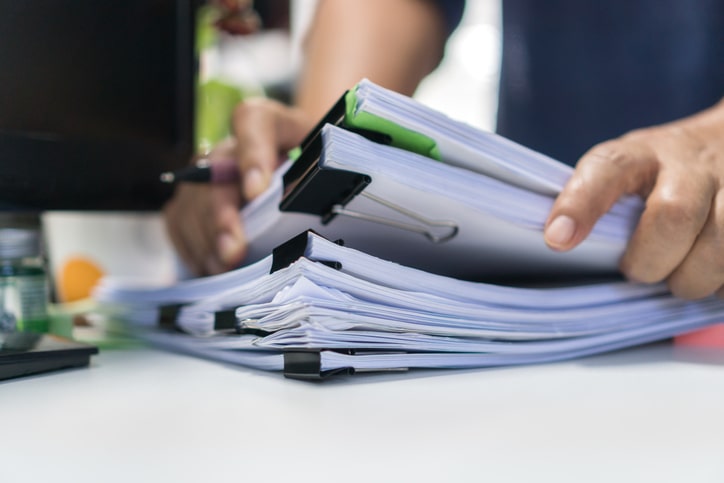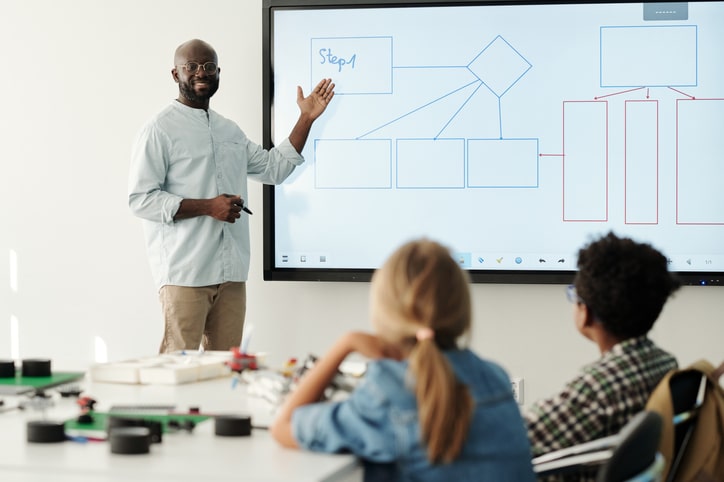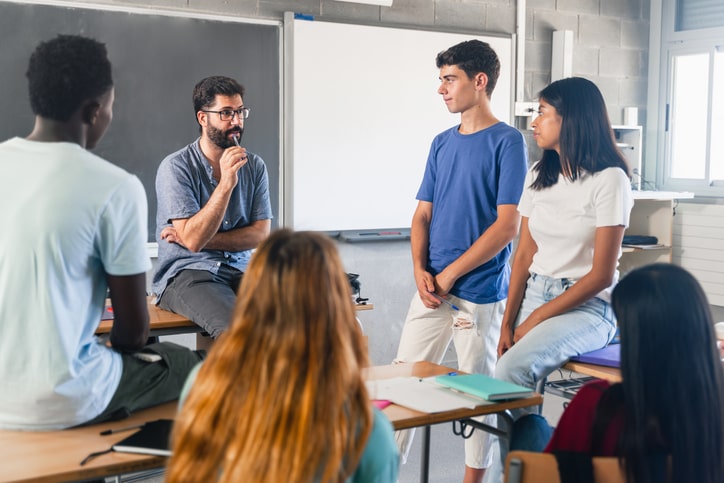Whether it’s high school, middle school or elementary, teachers have an overwhelming workload at the beginning of the school year.
Get started early with our Back to School list for teachers! Make lists, do a little at a time to keep the stress low, and ensure you have a successful start, and a wonderful new school year!
Summer always goes by too fast! Before you know it, it’s time to go back to school, and you haven’t accomplished half the things on your back to school list.
Here are 10 things you need to do before heading back for the first day.
1. Take Care of Yourself

This won’t be the first thing you are thinking about when you start preparing for the upcoming school year, but it is the first thing on the list because you are the most valuable resource your students will have throughout the year!
Start the school year right by getting enough sleep (good planning and preparation will help you sleep well), eating well, and keeping your home or space clean and tidy.
The school year is often busy, stressful and just overwhelming. Make a point to take care of yourself throughout the year. Schedule medical appointments, hair and nail appointments, sports, athletic activities, and any special events and parties in your calendar for the first month or two to ensure they happen. Then, start planning what you will do on your vacations! Planning these events (and remembering them!) can get much harder when you’re back on school time.
Everything seems to take a back seat to work when school starts.
Taking care of yourself regularly will help to reduce stress, prevent burnout and keep yourself energized for the tasks ahead!
Related article: Four Signs of Teacher Burnout: Signs and Solutions
2. Bring Essentials to School

Planning for full days at school is like preparing for a campout. It may seem like a lot of stuff, but you’ll be happy you planned ahead when the time comes to reach for a snack or you’re too far away from the nurse’s office and need a bandaid. Frontloading the essentials will help you have an easier year. Here are some things to consider:
- Invest in a good school bag- a backpack or tote that will carry all of your essentials back and forth all year long and not cause you shoulder or back pain!
- You may be able to trust your school to provide certain tools to help you prepare for the school year- printed curriculum documents, a laptop, border tape…but anything you know you will need, you should bring just in case- or little things that give your room character and set it apart from other rooms in the school.
- Bring more snacks than you need, and your colleagues and students will thank you!
- Bring a planner that works for you- school-provided or pre-made planners don’t always cut it.
- Keeping a phone charger in your desk drawer will come in handy on days when you unexpectedly forget to plug it in overnight.
- Makeup, toiletries, and anything else you might need- bring these in during the first week and set up your room as a little home away from home. You will be spending 8 hours per day (minimum) in your classroom, so it may as well be comfortable and well stocked!
- If you have a lot of personal teaching materials (maybe you are the type of teacher who finds fun teaching materials at garage sales!), you might want to bring your items to school in phases. Don’t try to bring everything at once! You have a whole year, and you will not use everything at once.
3. Prepare your Classroom

The classroom environment is a very important part of your student’s experience. How do you want students to feel when they walk in? New students especially will benefit from the work you put into making the classroom inviting.
Students should feel excited and filled with possibilities. They should also feel accepted, ready to learn and eager to be part of the community. Does this sound impossible? It’s not! But it takes some preparation…
Prepare a checklist of items needed for your classroom. A new classroom will almost always need:
- Labels for supplies
- Bulletin board displays
- Student name tags
- Student seats, folders or drawers labeled
- A place to display the schedule
- The day one schedule already displayed
- List of needed supplies for each student
- A place for learner workbooks
- A visual guide to the classroom routine (i.e. put away your backpack, put away your lunch, find your handwriting folder, check the schedule, do your task)
While this sounds like a lot, your classroom should be tidy and have lots of room for your students and whatever they bring with them. A clean space and room on the walls will show them that there is room for them to leave their mark! Resist the urge to over-decorate and remember that students will provide plenty of work to add character, color and life to the walls.
Finally, your classroom says a lot about who you are. Make it yours! Add your unique touch. Are you obsessed with giraffes? Add a few! You are part of the classroom community too. When students see you adding your unique personality to the classroom decor, they will feel invited to as well.
"Get started early! Make lists, do a little at a time to keep the stress low, and ensure you have a successful start, and a wonderful new school year!"
4. Plan Your First Day and Your First Week

Teaching requires flexibility and preparation. This is especially true at the beginning of the year. No part of the school year is more critical than on day one! This is when your activities, games, worksheets and tasks should be planned to the minute, with a whole second lesson plan of activities ready to go in case something goes wrong or students finish quickly. The last thing you want is for the class to devolve into boredom or misbehavior.
Create detailed lesson plans for the first two days of class, and if you have time, for the whole first week. Nothing helps a teacher rest easy like well-thought-out, fail-proof plans.
Here are some fun ideas for day one:
- A classroom tour: Show students where to put their bags, homework, and shoes (if relevant) and where to find the schedule and tasks for the day.
- A school tour: This is especially helpful for students who are new to the school and or teachers who are new!
- Go over class procedures together as part of the classroom tour. What should students do when they first arrive? What are some routines they need to get used to?
- Review the class rules, or better yet, create them together!
- For middle and high school teachers, day one is time to share your class syllabus.
- Let students know what they can expect from you and from the class.
- An icebreaker activity: These are a great way to ease some day one tension- it gives students something easy and fun to do that helps them get to know you and their classmates. Some ideas include: name bingo, scavenger hunts, or even story time for little students- don’t worry about whether the first day games are related to your first unit or your class topic. The idea is to get students comfortable and open up.
- Printable activities: Some students really enjoy sitting down with a pencil and getting to work. It doesn’t need to be complicated- a crossword puzzle, word search or a template to fill in with information about themselves.
Don’t kid yourself; even with a lot of preparation, it won’t all be rosy. On day one, you need to be prepared for anything. Imagine that students will be late, some may not arrive at all, and if you work with young children, some might cry. Even in all that chaos, students will look to you to set the tone for the school year while all that chaos is happening around you. How will you react? Stay calm, be kind, and be excited to see your students!
Also, a well-prepared first week can make planning a back-to-school night a piece of cake. Take all of the information you just shared with students and turn it into a welcome letter for new families or new students! Use the tour you gave for students as a template for a back-to-school night checklist that will answer any parent questions before they even arise.
Related printable: Back to School Checklist for Elementary Teachers
5. Build an Everyday Routine

The first day and the first week of school are very important…but you will have a whole year to get used to, so it is important to build a routine to stay on top of the work you need to do.
Every day, you need to…
At the end of the day:
- Make notes about student behavior that you were not able to address. You don’t want to forget about important things going on in your students’ lives.
- Make a to-do list for yourself for the next day. Include even little things that could slip your mind as you purge work from your brain for the evening. If it ends up being very long, consider dividing it into urgent and not urgent so that you are ready to tackle the most important items first.
Before leaving school:
- Tidy up the room. You will have a better day if you open the classroom door and see items put away rather than the remnants of a hard day still strewn around the class.
After school:
- If there is something you need to buy for the next day, do it before you get home, go out, or before you completely unwind for the day.
- Relax! You need time to rest and rejuvenate. Turn off your school brain, don’t read your emails. You need to eat well and get a good amount of sleep. Make time for your friends, family and personal needs. You will be a better teacher when you do.
Related printable: Back to School Routines and Procedures Checklist
"Resist the urge to over-decorate and remember that students will provide plenty of work to add character, color and life to the walls."
6. Plan Your Technology Use

No matter what school you work at, you will have some technology to grapple with. How and when will you incorporate technology?
If your school uses an online portfolio system like Seesaw, go over posting policies with students, and schedule when you will make your posts. That way, you can automate frequency and quality and have a great portfolio to look back on throughout the year!
Do you have student ipads? When should they be using them? How can you control screen time? Which apps are free for them to use and which are off limits?
It is always easier to start the school year strict and loosen up once students prove they can work within the rules framework. You will have an easier, more rewarding year when you start with clear plans and policies in place!
7. Make Your Professional Development Plans Early

Your goals for the school year are important. The earlier you choose, the more you can accomplish.
Will your professional development involve an action research project? Does it require buying special materials that may take some time to arrive? Will you be required to work around a colleague’s busy schedule? No matter what you choose to focus on for the year, you can bet you will be busier than you think you will be! So schedule your check-ins, meetings, or research gathering sessions as early as possible to ensure they get on the calendar and are not shuffled out of site by team meetings, staff meetings or special events.
Your professional development is important to your career, so you must protect it!
8. Get Ahead of the Little Stuff

Teachers have a million little things to do on any given day. So many that teachers often forget to go to the bathroom! Making copies, sharpening pencils, setting out instructions for tasks, collecting books, emailing parents, talking to colleagues about collaborative plans- the list never ends.
Be kind to yourself, and make a point to keep ahead of the little things. If you have a teaching assistant, you are a step ahead, as you can make lists of copies or small items that need to be collected for upcoming lessons. Even if you do not have a teaching assistant to take care of small tasks, you can stay ahead of the game. Make lists and divide tasks into most and least urgent. Prioritize things like replying to parents and leave the prep for a lesson that is five days away until tomorrow.
Even inquiry-based schools must sometimes make class set copies of printables, templates or other papers for students to use. Schedule your printer run, and make sure to keep ahead of your weekly lessons. If possible, copy one week’s worth of handouts, worksheets and other materials ahead of time. A strong organization system can ensure that you can walk into your class, find the materials and be ready to teach.
"Be kind to yourself, and make a point to keep ahead of the little things."
9. Tips and Tricks For An Easier Year

Get lesson ideas and plans early:
Review last year’s syllabus and/or lesson schedule if you are in the same grade. While you might not use the same schedule or routines, it might jog your memory for some good ideas!
New teachers could benefit from reviewing the ELA, math and any other curricula, as it is the bottom line when it comes to what children need to learn. This will help with creative ideas for how to address certain learning standards. (i.e. names of children’s books that would be great for learning decimals and money math!)
Veteran teachers are an excellent resource, both to new teachers and each other. If they have been teaching the same grade for many years or if they have moved around to
Protect your time:
There will always be teachers and staff who seem to have it all together and want to chat with you about the latest gossip. If you are scrambling to get everything together for your next lesson, you can politely let them know that you don’t have time to chat but will find them later. Finding a secluded, quiet place in the school to complete work is also a great way to avoid unwanted chit-chat when you need to get something done!
10. Think about your classroom management

Take the time to decide how you want students to be organized in your class. Every teacher has a different style, but every student benefits from clear rules and routines.
Will you have a list of classroom jobs for students to rotate through? Will you divide the room into teams? Do you want to set the tone early with a class behavior chart? Will you incorporate fun quizzes, prizes and systems that will get students excited?
Whatever you do, it is best to start the year with a classroom management plan and adjust it when you get to know your class, rather than scraping one together once you realize you have a problem.
Let TeacherVision Help!
Teaching is challenging but rewarding work. Start your school year right, and let TeacherVision help you!
Sign up for our newsletter for more tips throughout the year. And for lesson planning help and other ideas, check out the TeacherVision Lesson Planning Headquarters.


